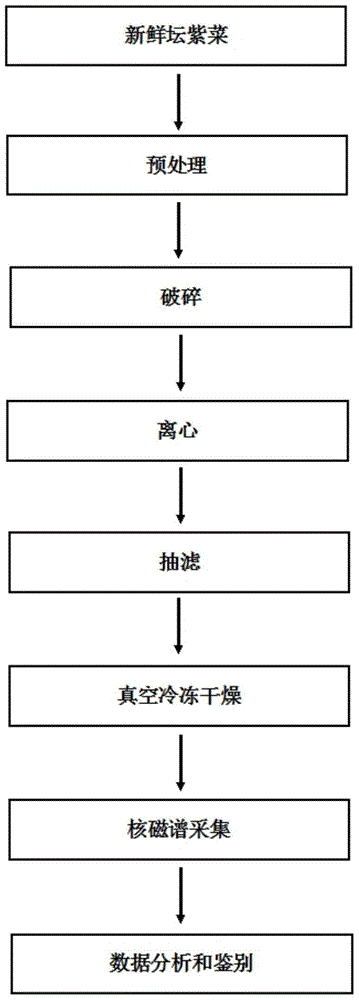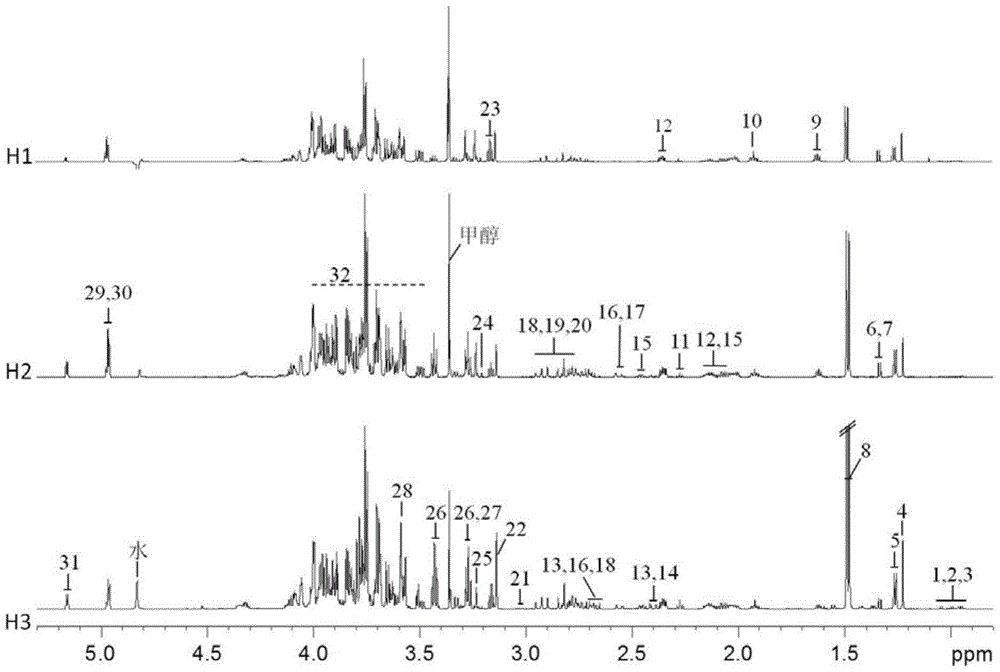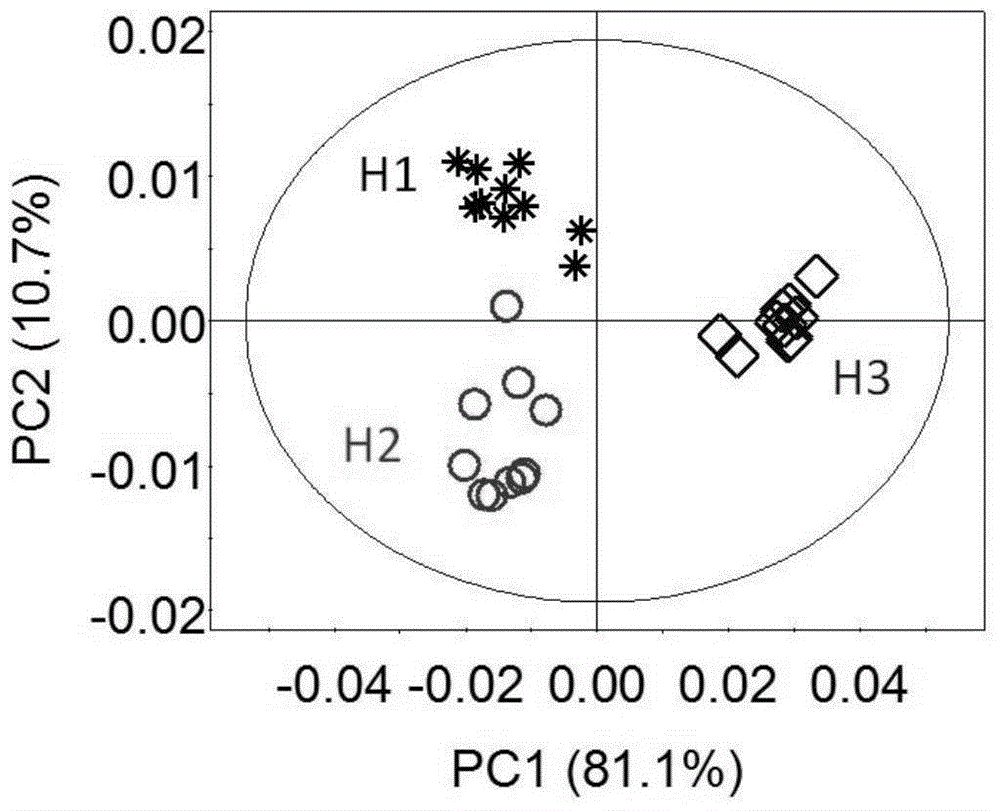Identification method for porphyra haitanensis in different harvesting periods
A technology of altar laver and harvesting period, which is applied in the field of identification of altar laver in different harvest periods, can solve the problems of distinguishing laver and consumers, and achieves the characteristics of simple processing method, fast detection speed, good reproducibility and high degree sexual effect
- Summary
- Abstract
- Description
- Claims
- Application Information
AI Technical Summary
Problems solved by technology
Method used
Image
Examples
Embodiment 1
[0033] Such as figure 1 As shown, in this embodiment, nuclear magnetic resonance technology is used to compare the first batch harvested in November (hereinafter referred to as Yishui), the second batch harvested in December (hereinafter referred to as Ershui), and harvested in January of the following year. The method for identification of the third batch of Porphyra chinensis (hereinafter referred to as Sanshui) includes pretreatment, crushing, centrifugation, suction filtration, vacuum freeze drying, nuclear magnetic spectrum acquisition, data analysis and identification. The specific steps are as follows:
[0034] 1) The pretreatment steps are as follows: the first water, the second water and the three water altar seaweed are washed by secondary sand filter seawater, drained and placed in a cool place to blow off the surface water.
[0035] 2) The crushing step is: take pretreated laver in monohydrate, dihydrate and three waters, weigh 0.1g to 2mL centrifuge tube, add methanol a...
PUM
 Login to View More
Login to View More Abstract
Description
Claims
Application Information
 Login to View More
Login to View More - R&D
- Intellectual Property
- Life Sciences
- Materials
- Tech Scout
- Unparalleled Data Quality
- Higher Quality Content
- 60% Fewer Hallucinations
Browse by: Latest US Patents, China's latest patents, Technical Efficacy Thesaurus, Application Domain, Technology Topic, Popular Technical Reports.
© 2025 PatSnap. All rights reserved.Legal|Privacy policy|Modern Slavery Act Transparency Statement|Sitemap|About US| Contact US: help@patsnap.com



